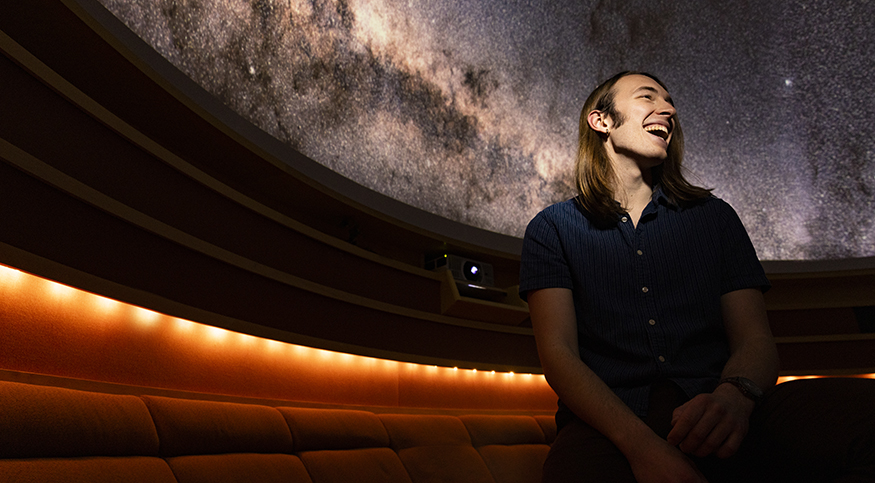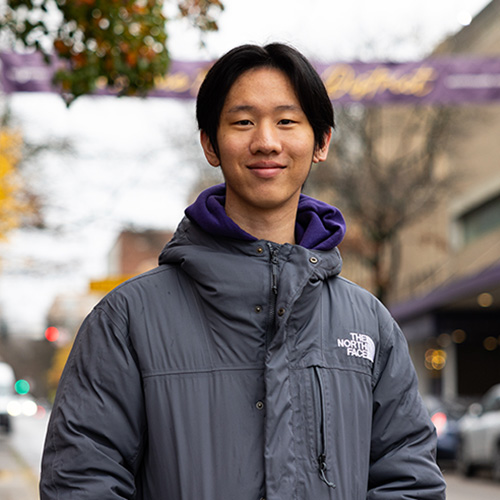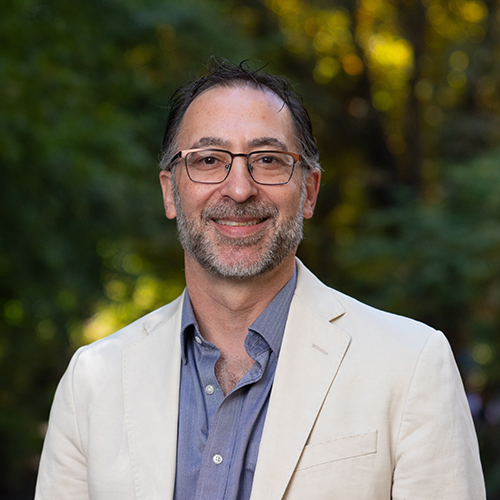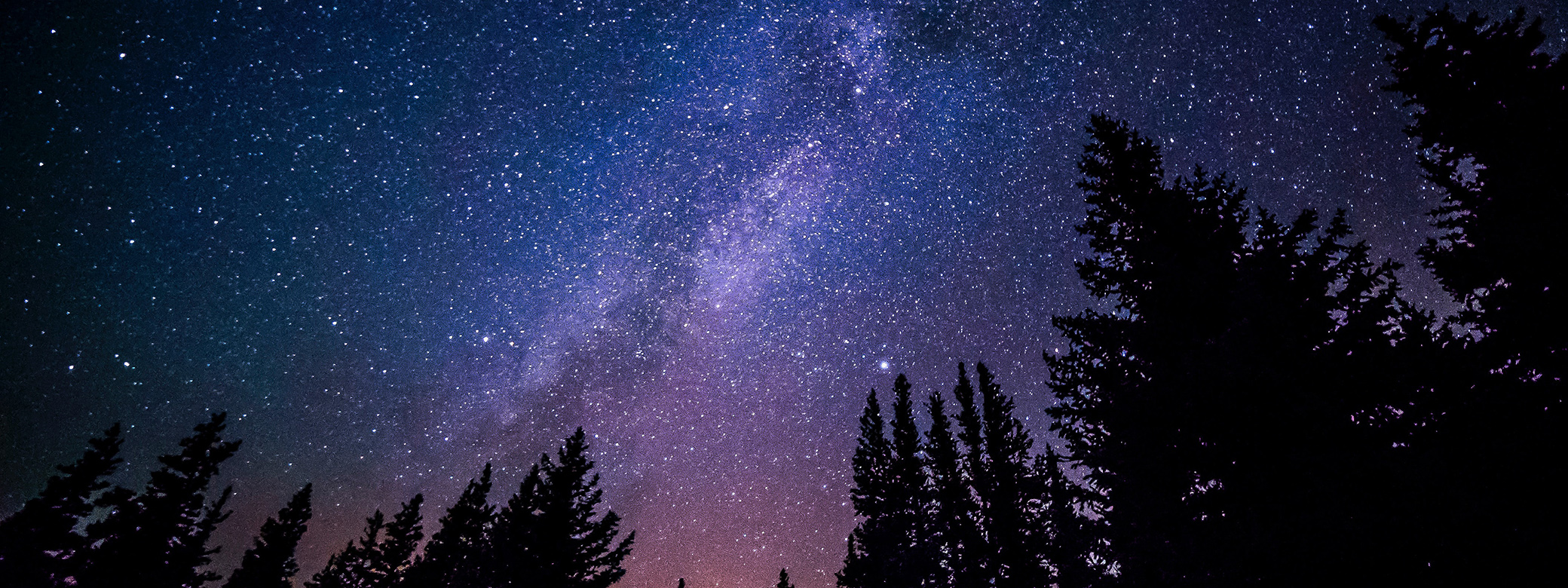
A fuzzy black dot appears on a computer screen, with a diffuse streak trailing behind. That would mean little to most people, but for University of Washington student Max Frissell, such a sight is cause for celebration.
Frissell, who graduated from the UW College of Arts & Sciences this month with departmental honors, helped capture a similar image using the Apache Point Observatory’s powerful 3.5-meter telescope. He immediately recognized the dot as a comet, with a tail of dust and gas particles visible behind it.
“Across most of the image, you could see this tail,” says Frissell, a double major in astronomy and physics. “And it was just… WOW. Nobody had ever known before that this particular object was active. And it was super active. It was just awesome.”
Frissell has seen other comets since, but that one will always be special. “That object has stayed with me,” Frissell says. “It’s not observable at the moment, but that’s my guy now.”
Drawn to Physics and Astronomy
Since his childhood in Maryland, Frissell has been interested in math and science, particularly the application of mathematical tools to solve problems. By middle school, when asked what he wanted to do when he grew up, his standard answer was astrophysicist.
“I couldn’t have told you what it meant exactly, but I knew that it was the peak smart-person thing to be,” he laughs.
Inspired by his high school physics teacher, Frissell pursued a physics major at the UW and, after his first year of college, a summer internship at the SLAC National Accelerator Laboratory. The internship focused on microwave engineering for a particle accelerator.
Much less is known about the Solar System than you might think, given that it’s been more than fifty years since the first spacecraft was launched and we’ve been looking at celestial objects for millennia.
“The internship was great, getting to do real science with real scientists, but I realized that kind of research didn’t appeal to me,” says Frissell. “I spread my feelers out after that because I didn’t know what I wanted to do.”
Astronomy also interested Frissell, so he took an astronomy course on the Solar System during his sophomore year. That led him to add a second major in astronomy.
“I loved that course so much,” Frissell says. “Much less is known about the Solar System than you might think, given that it’s been more than fifty years since the first spacecraft was launched and we’ve been looking at celestial objects for millennia. It was just very compelling to investigate that more.”
Frissell took more astronomy courses and looked for opportunities to participate in astronomy research, preferably related to the Solar System or exoplanets. He finally found an opportunity at the end of his junior year, when postdoctoral scholar Colin Chandler invited Frissell to assist with research using the Astrophysical Research Consortium (ARC) telescope at the Apache Point Observatory.
A Stellar Opportunity
The powerful 3.5-meter ARC telescope can capture images of distant celestial objects. The facility, located in New Mexico, is owned by a consortium of universities including the UW, with a limited amount of telescope time allotted to each institution. Most research is done remotely rather than on site.

Undergraduates rarely, if ever, have the opportunity to use APO’s 3.5-meter telescope, but postdoc Chandler was in a bind. He needed a second researcher to help during his allotted APO time and the postdoc who had served in that role was no longer available. For Frissell, it was the opportunity he’d been waiting for. Chandler’s focus on asteroids, comets, and other small bodies in our Solar System perfectly aligned with Frissell’s own interests. He joined Chandler’s research project in 2024.
Frissell explains that studying small celestial bodies can provide clues to the early Solar System. For example, as a comet nears our Sun, the Sun’s heat turns the ice on the comet’s surface to gas and dust, creating a coma (a cloud around the comet) and tail. Tracking the comet’s orbit backward, researchers can surmise what the orbit might have looked like in the distant past and how the comet’s interaction with planets might have sent it closer to the Sun.
“The crown jewel of the project is looking for objects that have comet tails when close to the Sun because that means those objects probably have some ice on them, which can tell us where water is in our Solar System,” says Frissell. He explains that comets can directly interact with planets by crashing into them — and possibly delivering water when they crash.
“Comets are a possible source for Earth’s water, but we don’t know for sure,” he says. “A big question to figure out is how much water comets could have delivered to the Earth early in the history of the Solar System.”
A Memorable Year
In addition to his work with Chandler, Frissell joined another research project in 2024, working with Joshua Krissansen-Totton, assistant professor of earth and space sciences. That project involved modeling what various theoretical exoplanets would look like using the Habitable Worlds Observatory telescope, a NASA mission currently in the early planning stages. The goal is to fine-tune the capabilities that telescope should have.

Frissell juggled both research projects during his senior year. He also received the Gregory Lynn Andersen Scholarship, awarded by the Department of Physics to recognize academic excellence. The scholarship covered a full year of in-state tuition, which — along with mentorship and research opportunities — made Frissell’s final year truly memorable.
“My professors in physics and astronomy, and the research mentors I’ve had, have been really supportive,” Frissell says of his time at the UW. “They very much understand that while it’s their job to do their own research, it’s also their job to facilitate research opportunities for their students.”
Come fall, Frissell will build on the knowledge and skills gained at the UW as he heads to Northern Arizona University, where he will begin a doctoral program in astronomy and planetary science.
More Stories

The Public Impact of Private Cities
Geography major Edwin Bai has researched private cities, developed by individuals and corporations, that "take the libertarian idea of low government regulation to the maximum."

A "gesture" to jump-start careers
To prepare students for professional success, the UW College of Arts and Sciences offers “gesture,” a mock startup company where student interns gain skills that employers seek.

The Curious Journey of Chinese Characters
Several Asian countries adapted the Chinese writing system—the oldest writing system still in use—for their own languages. In a new book, Professor Zev Handel shares how that happened.
